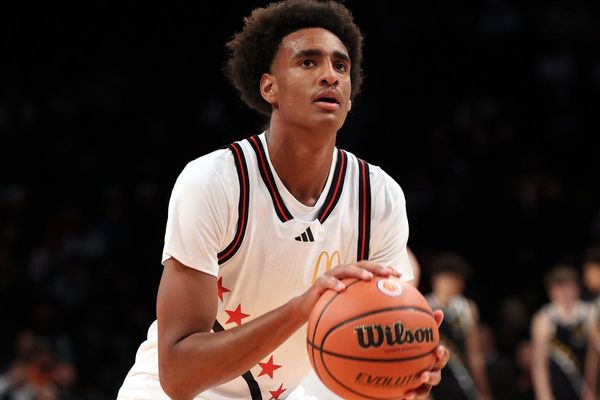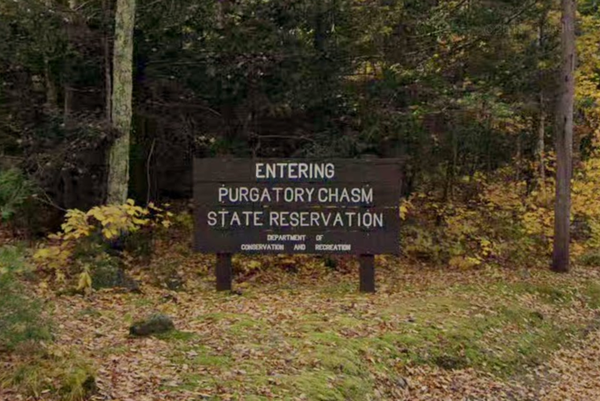
OK Ubisoft, I'm excited for Assassin's Creed Shadows. I honestly did not see that coming. When Shadows was announced three years ago as "Codename Red," I was prepared to give it a big ol' shrug. Back then it was billed as the next "RPG" Assassin's Creed in the vein of Odyssey or Valhalla, which sounded like the opposite of the AC games I wanted to play again. Not even its Japan setting turned me around, a destination so highly requested for so long that Ubi let Sony beat them to the bag with Ghost of Tsushima.
But since then, slowly but surely, Ubi has been saying all the right things about Shadows to get a jaded, stealth-loving, "we peaked with Ezio" fan to wonder: Are we back?
- One of the protagonists, Naoe, is a shinobi with a hidden blade (cool)
- Its open-world Japan is smaller than Valhalla, but dense with cities and rooftops (OK, good stuff)
- There's a dynamic lighting system and a Splinter Cell-like visibility meter (yes yes, keep talking)
- You can go prone to hide in low grass or find shortcuts through crawl spaces (amazing, say more)
- You can extinguish candles and snuff out lanterns from a distance to create shadows (perfect, no notes)
This was the stuff on my mind going into a six-hour Shadows play session at Ubisoft Quebec, the first time anyone outside the studio has played the twice-delayed action RPG. It was largely a gameplay showcase: I played through part of each character's prologue, but not long enough to see Naoe and Yasuke meet, and one main questline in the Harima province, one of nine chunks of the map.
The idea behind Shadows' dual protagonists is ambitious, and not at all subtle. This is Ubisoft simulating two distinct videogame fantasies in a bid to satisfy two very different, almost opposing types of AC fans: the old purists who want hoods, blades, and creeds back, and the folks who love stepping into the boots of historical warrior archetypes, assassins be damned. What's remarkable is that Ubisoft might just pull it off.
I had a blast infiltrating castles, bounding over rooftops, and disassembling guard patrols one stab at a time as Naoe. The dynamic lighting is just as cool as I hoped—that Splinter Cell visibility meter adds welcome complexity and expression to sneaking. At night, compounds aren't just obstacle courses of hay bales and waist-high cover, but projections of hazardous light and malleable shadows charting a safe path to my goals. My gut says Shadows is the strongest stealth package in 18 years of Assassin's Creed. But a bigger surprise was how much fun I also had charging barricaded doors, cleaving through unarmored ronin, and shrugging off glancing blows as Shadows' historical Black samurai.
Rival blades
At times, controlling Naoe and Yasuke felt like playing two different action games. They share controls, quests, and combat fundamentals, but their toolsets forced me to look at the same obstacles from different angles. As Naoe I thrived on the rooftops, using her grapple hook to reach a vantage point, scout guard patrols, and map out a basic plan to get where I'm going. Her kit revolves around a ghost playstyle—noisemakers, smoke bombs, and a limited supply of kunai that can kill from a distance.
Yasuke is inherently reactive, by comparison. He's best played by barging into the action, maintaining the element of surprise just long enough to decapitate the biggest guy in the castle. I love the way Ubi makes Yasuke's height and muscle mass a genuine, gameplay-relevant asset—one time I sprinted up to a guard who hadn't seen me yet and Yasuke shoved him so hard he went flying 20 feet off a cliff. His light attacks slice through the blocks of fodder soldiers as if they're not even holding swords. Most attacks that I failed to block or dodge barely staggered him. One of Yasuke's cooldown abilities is this glorious, exaggerated kick that turns pipsqueak samurai into lethal projectiles.
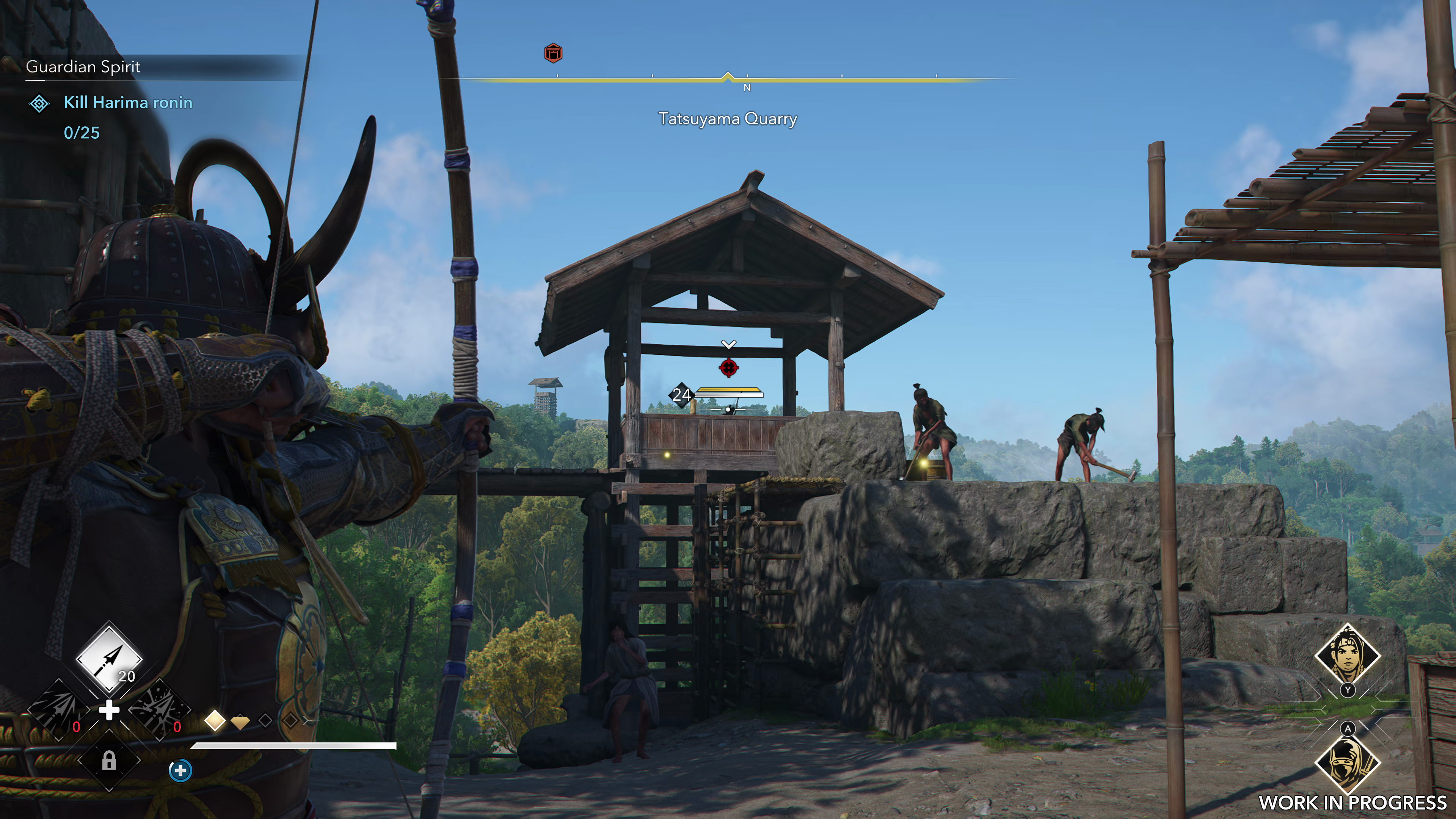
Against heavily armored samurai or brutes with big clubs, Naoe's margin for error is essentially zero.
I love that Naoe and Yasuke's playstyles are also defined by what they can't do. Naoe can glide over rooftops and parkour up towers, but those fodder enemies that are bugs on Yasuke's windshield are an actual problem for her when outnumbered. She can parry attacks, but can't just hold block like Yasuke, and with the mid-tier gear I was playing with, she could only withstand three or four hits before going down. I died or narrowly escaped every time I tried to fight more than three enemies at a time, and against heavily armored samurai or brutes with big clubs, Naoe's margin for error is essentially zero.
But those limitations are fun to work around. Got an area full of bad guys? Get creative with smoke bombs, use noise to isolate brutes, or maybe consider going around them instead.
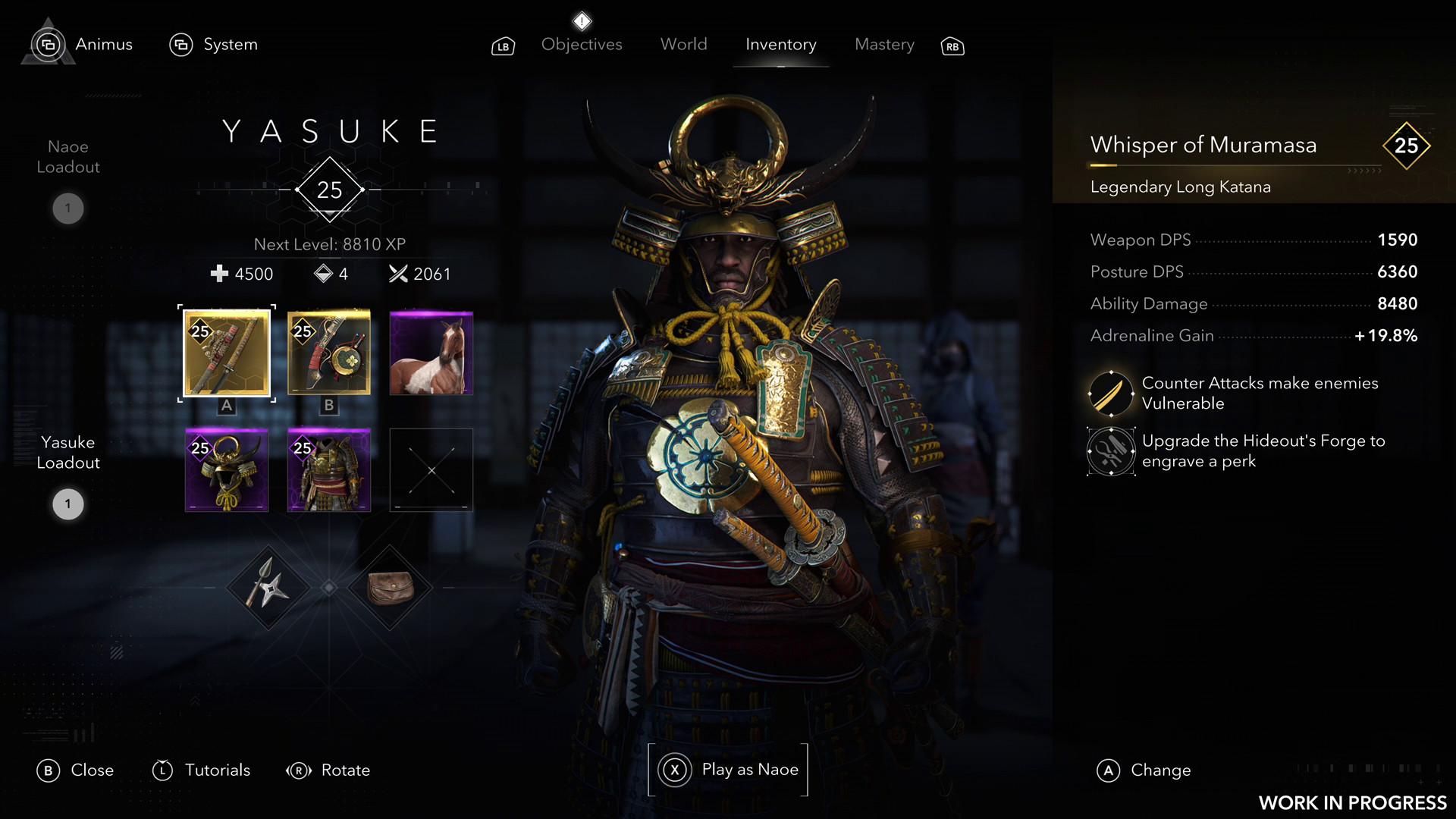
Yasuke's limitations are more practical and often hilarious. The dude is an absolute tank in a fight, but a hopeless buffoon when a lighter touch is needed. The fully armored samurai can crouch, take cover, and technically stealth kill. His surprise attack is called a "brutal assassination," which is very loud and noticeable but won't alert guards if you're totally alone. He can sort of climb if a ledge is comfortably within his reach, and his wobbly stance on narrow ledges is best described as worrisome. At one point, I tried to haul Yasuke across a tightrope between two buildings. The rope immediately snapped under his weight, dropping the heavily armored samurai into an embarrassing tumble in full view of guards.
That's all amazing. There's a version of Assassin's Creed Shadows that could've taken the Ezio copout of making both characters good enough at fighting and stealth that who you play becomes arbitrary. I respect that Ubisoft is doubling down on Naoe and Yasuke's differences in ways that deepen its action and reflect what we know so far about their personalities.
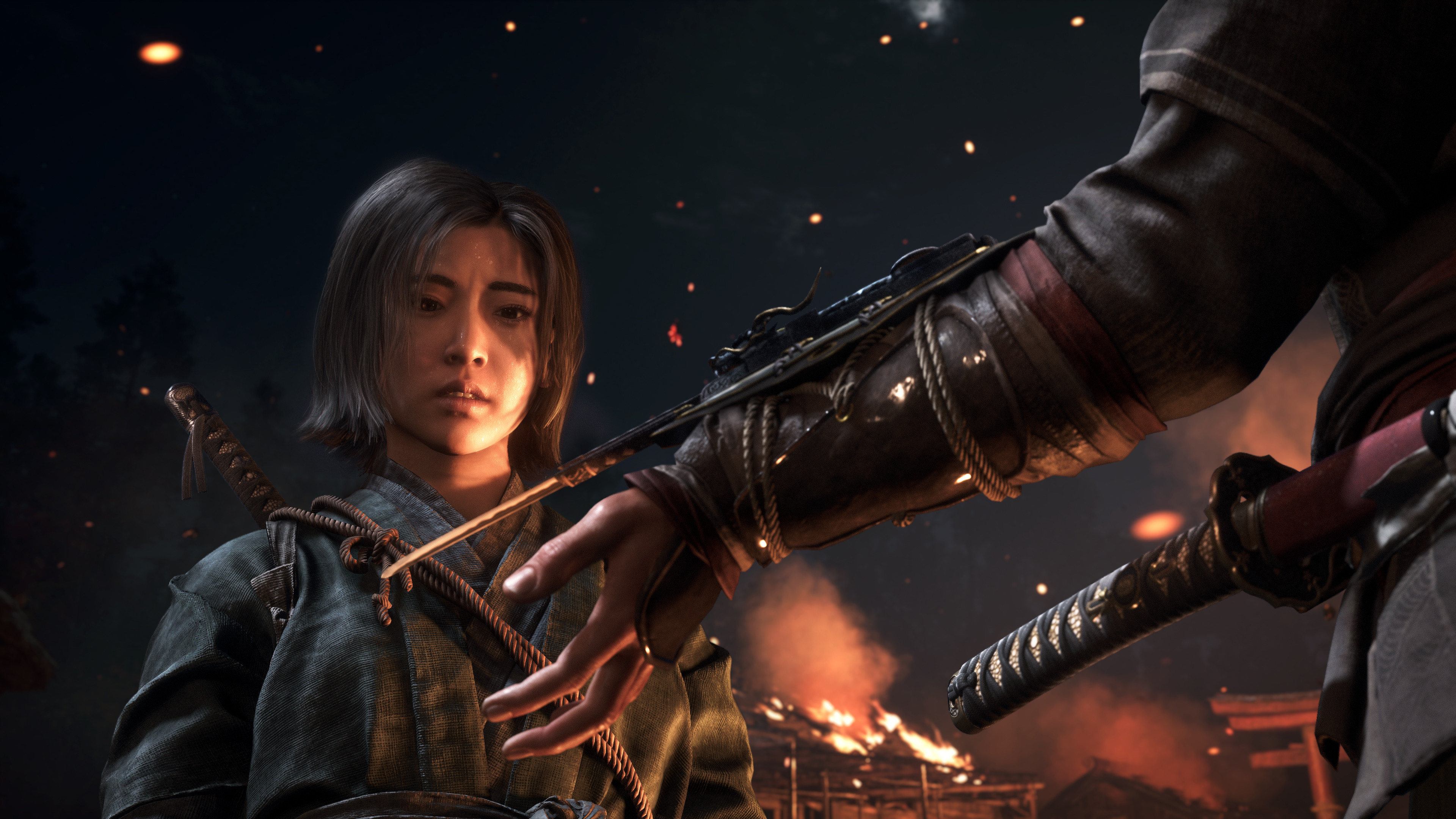
No gods, no masters
What I saw of Shadows' prologue is strong. Naoe's origins include cliches that this series can't seem to shake—a personal tragedy, dead family member who was secretly an assassin the whole time, the passing on of a hidden blade, a vow of revenge—but I'm interested to see Naoe and Yasuke's first encounter (Ubi suggested they start as enemies). Yasuke's introduction is a more interesting retelling of his real-life counterpart: We see him arrive in Kyoto as a slave of Jesuit priests, his encounter with daimyo Oda Nobunaga, and his recruitment to his services. By the time we're introduced to a cabal of masked killers who rule Japan's underground, you can see the Ubisoft open world pieces snapping together: Targets spread across the map just begging for a knife to the neck.
At times, controlling Naoe and Yasuke felt like playing two different action games.
We were let loose to explore somewhere in the middle of the game, according to Ubi. By then, Naoe and Yasuke were well along in recruiting allies, toppling corrupt lords, and building up a hideout to call home (more on that later). The story beats of the main quest I played weren't particularly great—a young lord goes missing and it might be an inside job—but I learned a few things, like how Yasuke and Naoe seem to operate as independent problem solvers with no sworn lords or masters, and that I love how Shadows handles its hands-off exploration.
Taking after Odyssey, Mirage, and a variety of other open world Ubi joints of the last few years, many objectives aren't immediately identified on Shadows' map. Instead, the game feeds you clues to find your target. You might know a person's description, or that the house you're looking for is in "southeast Harima" near a specific shrine.
It's simple, but I get a big kick out of turning boring GPS waypoints into immersive mini-investigations, especially because they help me learn landmarks and appreciate environmental details. There's an option to turn on traditional waypoints if that all sounds like the worst, but there's also a shortcut baked into the game loop. On the map screen, you can spend "scouts" to reveal objectives in a small area. Seems like a nice compromise—you still have to follow the clues to find the general area on the map. Scouts are also in short supply at first, only replenish as time passes, and are also used to smuggle supplies out of compounds.
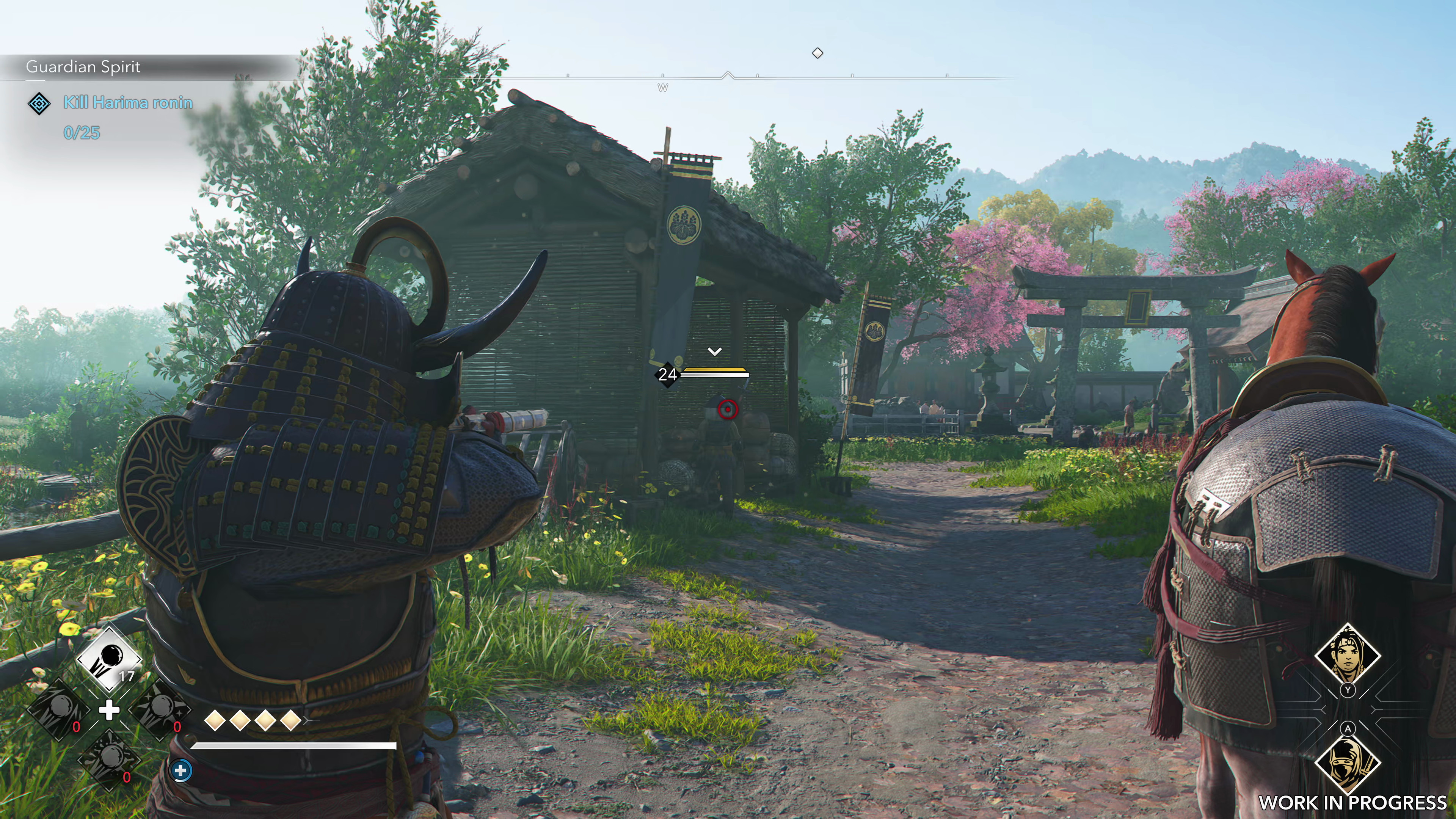
Those supplies feed into Yasuke and Naoe's hideout, a headquarters in the middle of the map that players expand on over time with workshops, homes, tea houses, dojos, and loads of other hand-placed buildings that serve as permanent upgrades. Making a forge, for instance, unlocks the ability to socket additional perks on legendary gear. I suspect some will dump hours into beautifying their home base—there are tons of statues, paintings, trees, and path types to unlock, or you can build a live-in petting zoo by observing animals in the world and unlocking them in the hideout.
A few other Shadows thoughts and questions after six hours:
- What about sidequests and other activities? The one sidequest available in the build I played was to "kill 10 ronin," which didn't blow me away.
- Shadows is extremely pretty: By far the most "next-gen" Assassin's Creed has looked. I really hope my RTX 2080 Super can run it.
- The main quest included a handful of moments where I could choose to proceed as Naoe or Yasuke. Sometimes the wording of the prompt hinted at which character might be better suited for what's next, like "Fight as" or "Infiltrate as".
- The controllable eagle drone is finally gone, and not a moment too soon. It was an overpowered information tool that took the fun out of scouting locations yourself, and Ubi agreed.
- During a studio tour, we watched Shadows game director Charles Benoit clear out a compound with a "stealthy Yasuke" build, which included a bow-focused armor set that was basically just robes. It was clumsy, but looked really fun.
- Will the seasons really matter? The seasons changed once during my demo, from spring to summer. I didn't notice any gameplay ramifications, though maybe those mainly come when the lakes freeze in winter.
- I hit a few weird bugs: One time I backflipped off a roof onto a bad guy and he didn't react at all, not even once I started killing him, and another time I climbed up to a synchronization point only to slide off the eagle perched on top and die.
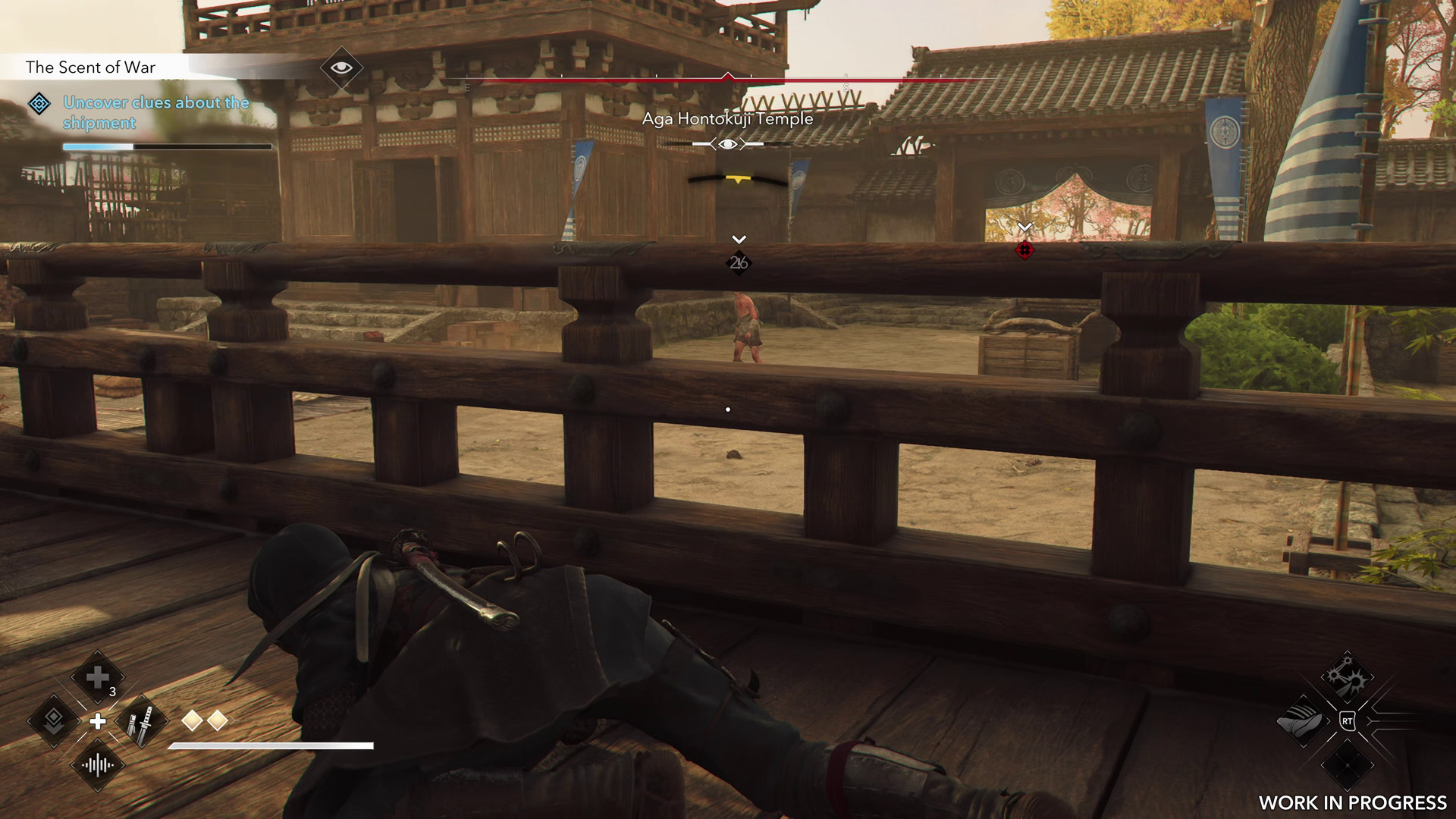
When a big game gets delayed twice, you never know how to read into it: is this a "our game's great, but it'll be done when it's done" delay, or an "oh god, we need to change everything immediately delay"? Ubisoft has a lot riding on Shadows' success, so there's probably some panic involved, but what I played showed a level of confidence I haven't seen from the publisher in years. Six hours is a drop in the bucket of what's likely a 40-60 hour game, but I'm feeling a lot better two months ahead of Shadows than I did two months ahead of Star Wars Outlaws.
Assassin's Creed Shadows is finally (cross your fingers) coming out March 20.
